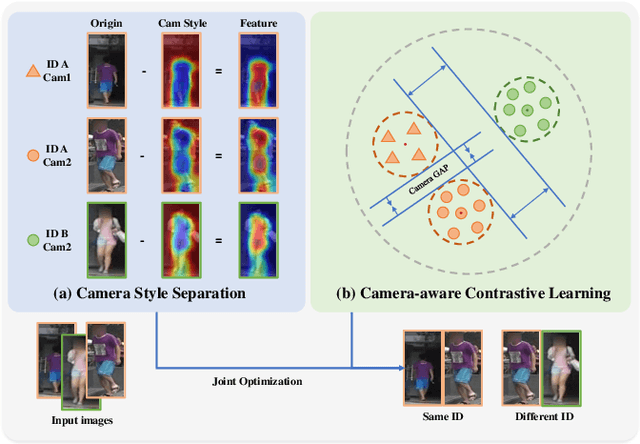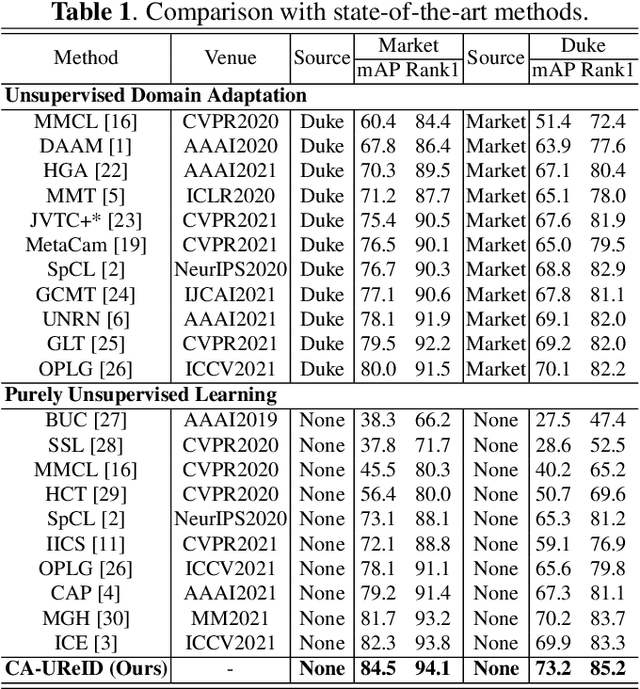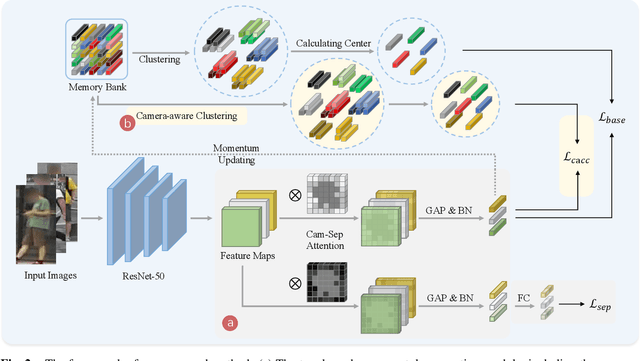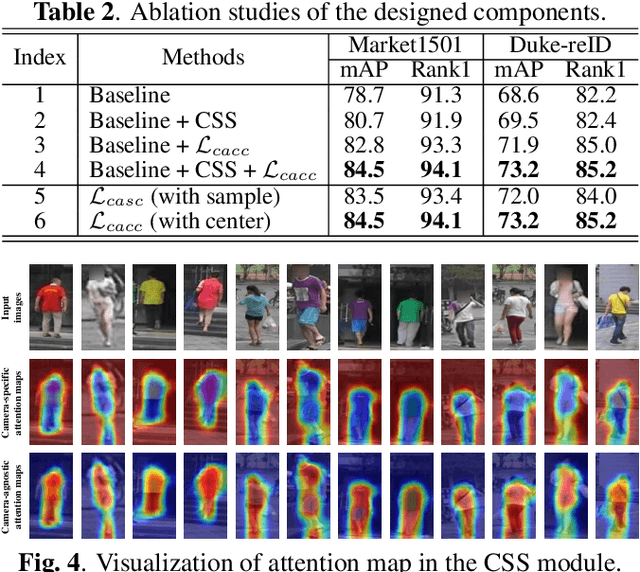Camera-aware Style Separation and Contrastive Learning for Unsupervised Person Re-identification
Paper and Code
Dec 19, 2021



Unsupervised person re-identification (ReID) is a challenging task without data annotation to guide discriminative learning. Existing methods attempt to solve this problem by clustering extracted embeddings to generate pseudo labels. However, most methods ignore the intra-class gap caused by camera style variance, and some methods are relatively complex and indirect although they try to solve the negative impact of the camera style on feature distribution. To solve this problem, we propose a camera-aware style separation and contrastive learning method (CA-UReID), which directly separates camera styles in the feature space with the designed camera-aware attention module. It can explicitly divide the learnable feature into camera-specific and camera-agnostic parts, reducing the influence of different cameras. Moreover, to further narrow the gap across cameras, we design a camera-aware contrastive center loss to learn more discriminative embedding for each identity. Extensive experiments demonstrate the superiority of our method over the state-of-the-art methods on the unsupervised person ReID task.
 Add to Chrome
Add to Chrome Add to Firefox
Add to Firefox Add to Edge
Add to Edge